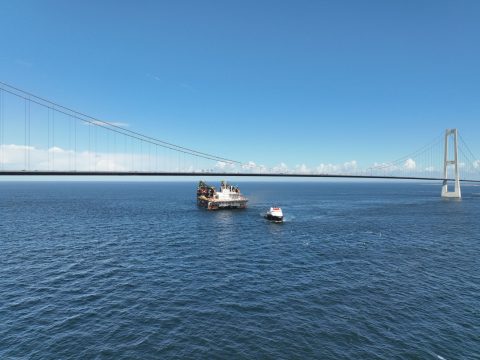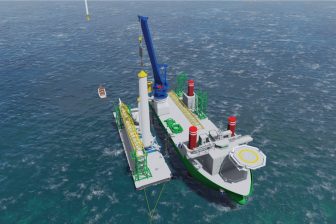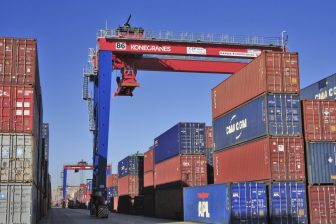
Thialf becomes Heerema’s first crane vessel to enter the Baltic Sea
Heerema Marine Contractors’ crane vessel Thialf has made the first crossing of the Storebaelt Bridge, known as the ‘gate to the Baltic Sea’. It is the first time a Heerema crane vessel has accessed the region and is the result of innovative crane alterations to enable passage below the bridge.
While ballasted down to Thialf’s maximum draught, the total air draught was just under 65 m with the A-frames down, the company said.
When Thialf was moored in the Port of Rotterdam over the winter of 2021-2022, the team onboard executed modifications to the vessel’s A-frames. This action is possible as Thialf’s A-frames already had hingable corners that can accommodate the NOV custom-designed semi-permanent adjustment system. The lifting capacity of Thialf is unchanged, with the vessel capable of lifting 14,200 metric tons.
Using this system, Heerema can lower Thialf’s cranes and fold the A-frames to create a sufficient air gap when combined with ballasting between the vessel and the Storebaelt Bridge.
The project has been greatly collaborative and was a Heerema Group effort as Heerema Fabrication Group’s Opole Yard completed most of the fabrication work. The team fabricated around 150 metric tons of structures required for the modification.
The modifications have also been significant in terms of works they unlock for the company. Heerema will be installing the 7,150 metric ton Baltic Eagle Offshore Substation (OSS) on behalf of its client Baltic Eagle. The vessel will then be moving onwards to install 27 wind turbines for Parkwind’s Arcadis Ost I wind farm in the Baltic Sea using novel Rotor Nacelle Assembly (RNA) installation method.



